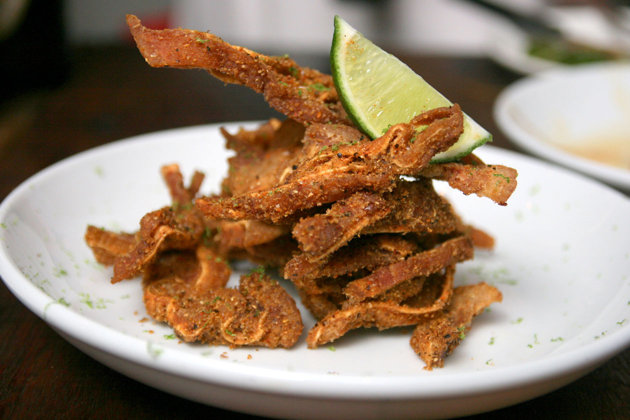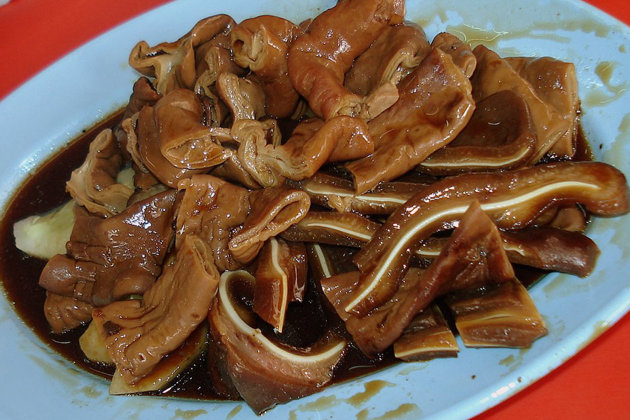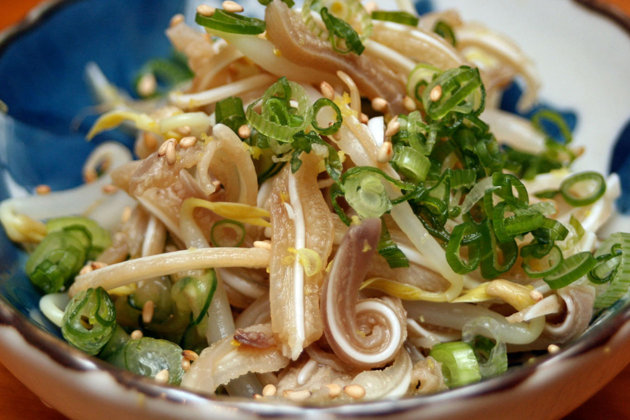
Pig Ears!
By Catherine Ling - Friday, May 30, 2014
Pig’s ears – what a fun thing to eat. The crunchy cartilage along with the fatty gelatinous skin an adventure in textures. And the slightly sweet porky taste is something you will only know when you try it.
The mere suggestion of chomping on piggy ears may provoke squeals of disgust from some people but almost every European or Asian culture has some recipe for this part of the pig.
This was all long before nose-to-tail dining became fashionable. Our curious (and hungry) ancestors just learned to eat all parts of the pig, and along the way magically made throwaway parts into delicacies. Necessity is the mother of invention, as they say.
Today we have pig’s ears popping up as bar food, as shown above, and quite appropriately so. Crispy skin, fatty lining and that crunchy cartilage – it’s a no brainer. Like these deep-fried spiced pig’s ears from Moosehead Kitchen-Bar (110 Telok Ayer Street). Chef Manel Valero was inspired by deep-fried pig’s face, a common street snack in Spain where he grew up. But as he couldn’t find deskinned pig faces here (only the whole head is sold), he decided to use pig ears instead, which works amazingly well.

Pig ears may be turning up as trendy conversational pieces in chef-driven hipster restaurants now in the West, but it’s still not on mainstream menus.
In Asia, however, they are celebrated many ways. The Chinese have a multitude of methods for preparing pigs ears. We lovingly braised them in spiced aromatic soy, along with innards and meats. We pickle them and press them into terrines, we boil, slice and chill them to become to cold marinated cuts. We have them as appetizers and pickled starters, salads and stir fries.

For Okinawans, pigs ears are known as mimigar. They may be thinly sliced and boiled, served lightly pickled or sauteed with vegetables. They even have dried pig’s ears as a chewy snack. Strangely, pig ears are not often eaten in other areas of Japan.

The Thai also sometimes include pig ears in larb moo dishes with lime, cilantro and mint. In northern Thailand, there is a dish of fermented pig’s ears grilled in banana leaf. The Vietnamese also have a spicy pig ear salad with fish sauce dressing.
Europeans also like pig ears boiled, stewed, smoked or roasted. When you stew pig ears, you also get a nice pot of gelatinous stock. The Spanish make crispy pig ears as tapas – look for orejas de cerdos on the menu. The Portuguese love a pig ears salad with coriander, and their feijoada bean stew often uses ears, feet, tails and other throwaway parts. It’s putting the whole pig to good use because these parts give flavour!
Don’t fear the pig’s ear. With its wonderful textures and rich taste, it lends itself well to many ways of preparation. It’s like bacon but better.


